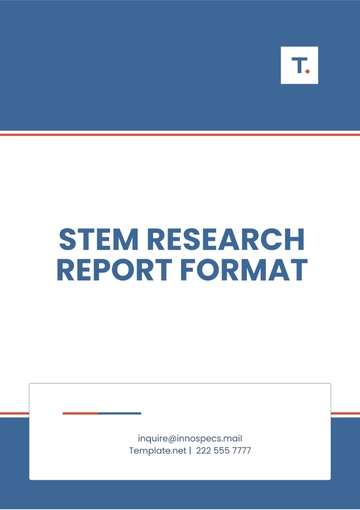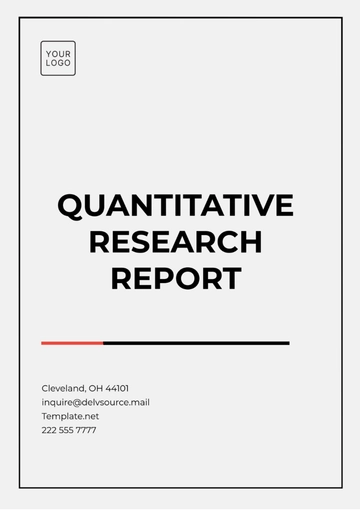Free Elementary Research Report

I. Introduction
The field of elementary education is vital for the foundation of lifelong learning and development. As such, identifying and implementing the most effective teaching strategies is crucial for enhancing student engagement and comprehension. This research aims to analyze various teaching methodologies to determine best practices that educators can adopt to improve their instructional approach.
This research is conducted by [YOUR NAME] at [YOUR COMPANY NAME], focusing on contemporary, evidence-based educational strategies in elementary schools. Complete details about the research and how to contact the research team can be found through our official mediums as listed at the end of this document.
II. Review of Teaching Strategies
A. Traditional Teaching Methods
Traditional teaching methods have long been the cornerstone of educational systems around the globe. These methods often include lectures, direct instruction, and standard assessments. While they provide a structured learning environment, their effectiveness in fostering critical thinking and creativity is often questioned.
Common traditional methods include:
Lecture-based teaching
Standardized testing
Direct instruction
Repetition and rote learning
Teacher-centered classrooms
B. Innovative Teaching Methods
In contrast to traditional methodologies, innovative teaching strategies aim to engage students through interactive and student-centered learning experiences. These methods include the use of technology, collaborative projects, and differentiated instruction tailored to the needs of each student.
Examples of innovative strategies are:
Project-based learning
Flipped classrooms
Integrative technology use
Group discussions and peer feedback
Differentiated instruction
III. Comparative Analysis of Teaching Efficacy
To evaluate the efficacy of traditional versus innovative teaching methods, a comparative analysis was conducted focusing on student engagement, comprehension, and retention. This section elucidates the data gathered from various elementary schools implementing both types of strategies.
The table below outlines the key outcomes observed:
Teaching Method | Engagement Level | Comprehension | Student Retention |
|---|---|---|---|
Traditional | Low | Moderate | High |
Innovative | High | High | Moderate |
Hybrid | High | High | High |
Project-Based | Very High | High | Moderate |
Flipped Classroom | High | Very High | Low |
IV. Recommendations
Based on the data analyzed, several recommendations can be made for educators seeking to enhance the learning experience in elementary classrooms. Emphasizing a hybrid or blended approach seems to yield the best overall results in terms of engagement, comprehension, and retention of students.
Recommendations for implementation include:
Incorporate project-based learning at least once a week.
Use technological tools to supplement traditional teaching methods.
Adopt flipped classrooms for complex subjects to better use classroom time for discussion.
Involve students in setting learning objectives to enhance engagement.
Regularly revise instructional strategies based on student feedback and learning outcomes.
V. Conclusion
This research underlines the importance of adopting varied and innovative teaching strategies in elementary education to cater to diverse learner needs. By integrating both traditional and modern methods, educators can create a more dynamic and effective learning environment.
The implementation of the recommendations provided in this report by [YOUR NAME] from [YOUR COMPANY NAME] is expected to foster significant improvements in educational outcomes in elementary schools.
VI. References
Smith, J. (2050). The impact of innovative teaching methods on elementary student engagement. Journal of Modern Education.
Brown, A. (2050). Comparing student outcomes: Traditional vs. project-based learning. Educational Research.
Johnson, L., & Turner, T. (2050). Teacher's Guide to Flipped Classrooms. Education Today Press.
Davis, S. (2050). Integration of technology in classrooms: Benefits and pitfalls. Educational Technology Review.
Foster, P. (2050). Strategies for differentiated instruction in elementary schools. Learning Differences Journal.
VII. Contact Details:
Conducted by: [YOUR NAME]
Email: [YOUR COMPANY EMAIL]
Address: [YOUR COMPANY ADDRESS]
Phone: [YOUR COMPANY NUMBER]
Website: [YOUR COMPANY WEBSITE]
Social Media: [YOUR COMPANY SOCIAL MEDIA]
- 100% Customizable, free editor
- Access 1 Million+ Templates, photo’s & graphics
- Download or share as a template
- Click and replace photos, graphics, text, backgrounds
- Resize, crop, AI write & more
- Access advanced editor
Introducing the Elementary Research Report Template from Template.net – a game-changer in academic documentation. This editable and customizable gem simplifies report creation. Harnessing the power of our AI Editable Tool, it streamlines the process, ensuring efficiency without compromising quality. Elevate your reports effortlessly with this versatile template. Unlock your potential with Template.net's Elementary Research Report Template today!
You may also like
- Sales Report
- Daily Report
- Project Report
- Business Report
- Weekly Report
- Incident Report
- Annual Report
- Report Layout
- Report Design
- Progress Report
- Marketing Report
- Company Report
- Monthly Report
- Audit Report
- Status Report
- School Report
- Reports Hr
- Management Report
- Project Status Report
- Handover Report
- Health And Safety Report
- Restaurant Report
- Construction Report
- Research Report
- Evaluation Report
- Investigation Report
- Employee Report
- Advertising Report
- Weekly Status Report
- Project Management Report
- Finance Report
- Service Report
- Technical Report
- Meeting Report
- Quarterly Report
- Inspection Report
- Medical Report
- Test Report
- Summary Report
- Inventory Report
- Valuation Report
- Operations Report
- Payroll Report
- Training Report
- Job Report
- Case Report
- Performance Report
- Board Report
- Internal Audit Report
- Student Report
- Monthly Management Report
- Small Business Report
- Accident Report
- Call Center Report
- Activity Report
- IT and Software Report
- Internship Report
- Visit Report
- Product Report
- Book Report
- Property Report
- Recruitment Report
- University Report
- Event Report
- SEO Report
- Conference Report
- Narrative Report
- Nursing Home Report
- Preschool Report
- Call Report
- Customer Report
- Employee Incident Report
- Accomplishment Report
- Social Media Report
- Work From Home Report
- Security Report
- Damage Report
- Quality Report
- Internal Report
- Nurse Report
- Real Estate Report
- Hotel Report
- Equipment Report
- Credit Report
- Field Report
- Non Profit Report
- Maintenance Report
- News Report
- Survey Report
- Executive Report
- Law Firm Report
- Advertising Agency Report
- Interior Design Report
- Travel Agency Report
- Stock Report
- Salon Report
- Bug Report
- Workplace Report
- Action Report
- Investor Report
- Cleaning Services Report
- Consulting Report
- Freelancer Report
- Site Visit Report
- Trip Report
- Classroom Observation Report
- Vehicle Report
- Final Report
- Software Report





























